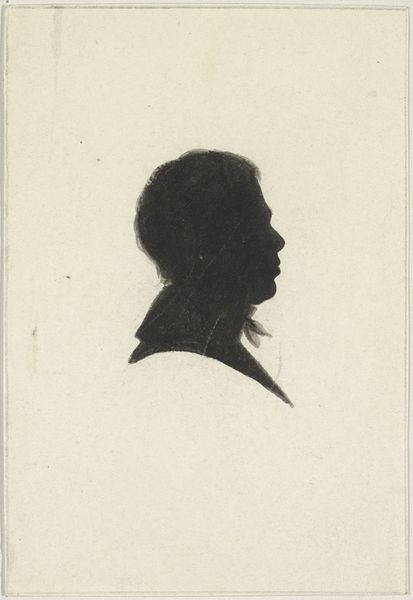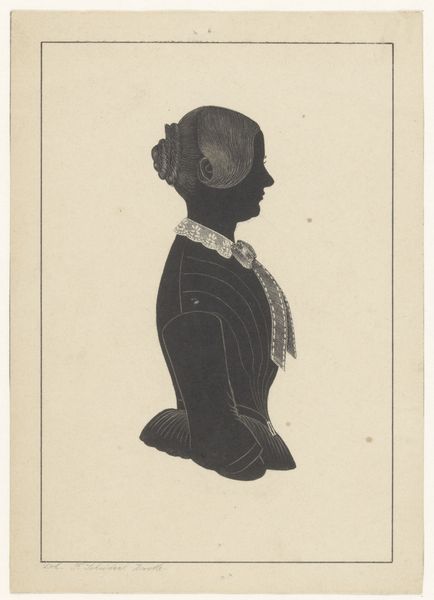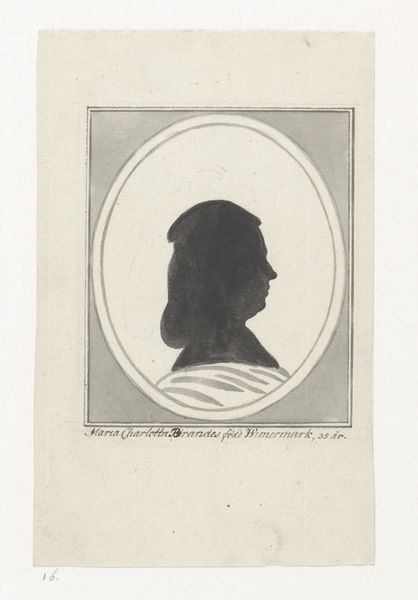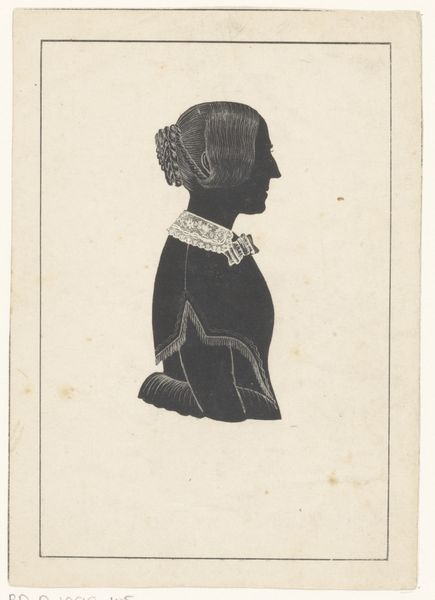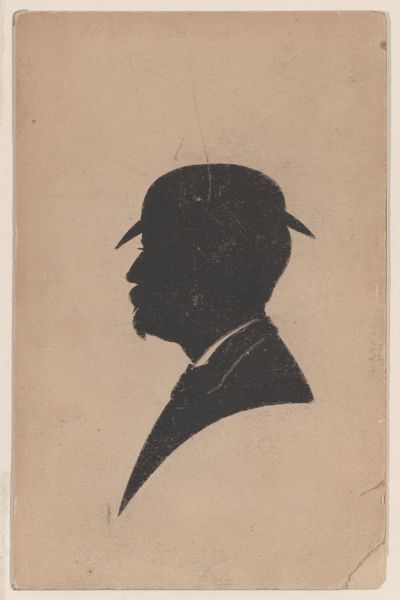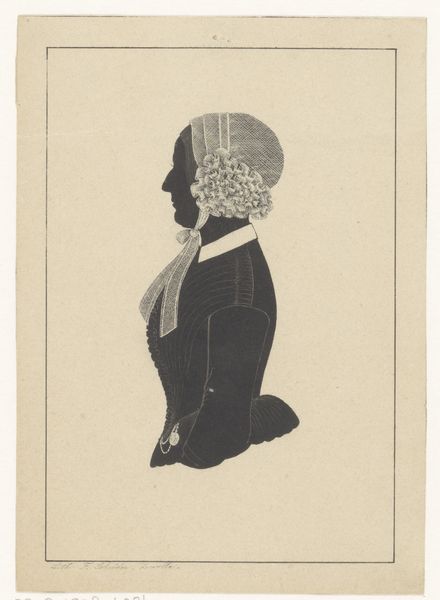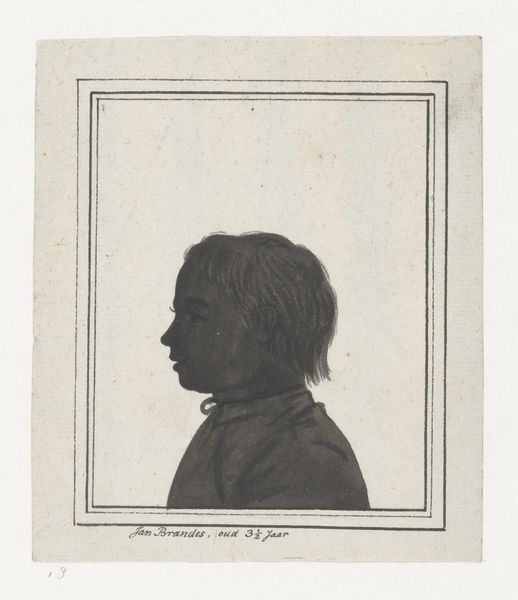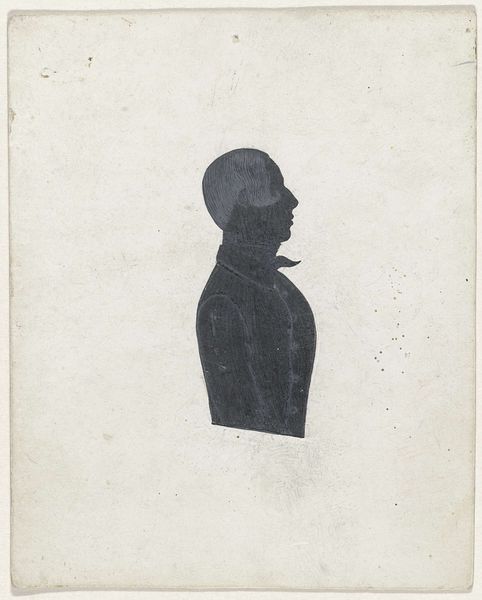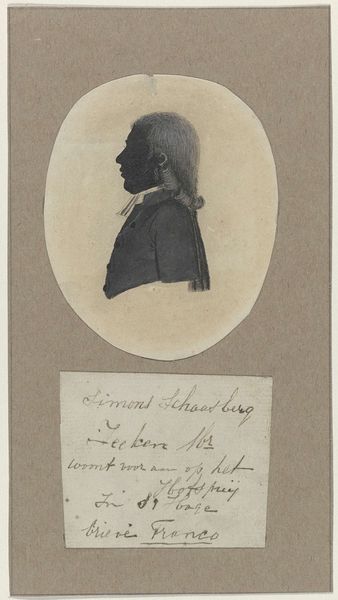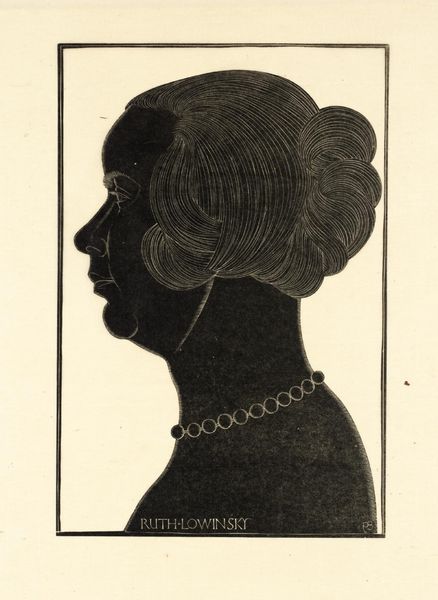
drawing, paper, ink
#
portrait
#
drawing
#
neoclacissism
#
paper
#
historical fashion
#
ink
#
watercolour illustration
#
history-painting
Dimensions: height 72 mm, width 62 mm
Copyright: Rijks Museum: Open Domain
J. Beeldsnijder created this silhouette of a boy, looking to the right, using an unknown medium. The silhouette presents a stark interplay of positive and negative space, where the subject’s profile is defined by the absence of light. The solid black shape against the pale background emphasizes the clean, unbroken lines of the boy's form, drawing our attention to the contours of his face, hair, and clothing. This reduction to essential form speaks to a visual language that predates photography, relying on stark contrast to capture likeness. Within the broader historical context, the silhouette can be seen as a means of democratizing portraiture. By stripping away color and detail, it flattens hierarchies of representation. Consider the semiotic implications here – the silhouette acts as a sign, not of individual identity, but of a broader social category: youth, masculinity, perhaps even status, as suggested by the cut of his clothes. The form invites ongoing interpretation, revealing how the reduction of form can amplify our focus on line, shape, and the very act of seeing.
Comments
No comments
Be the first to comment and join the conversation on the ultimate creative platform.
